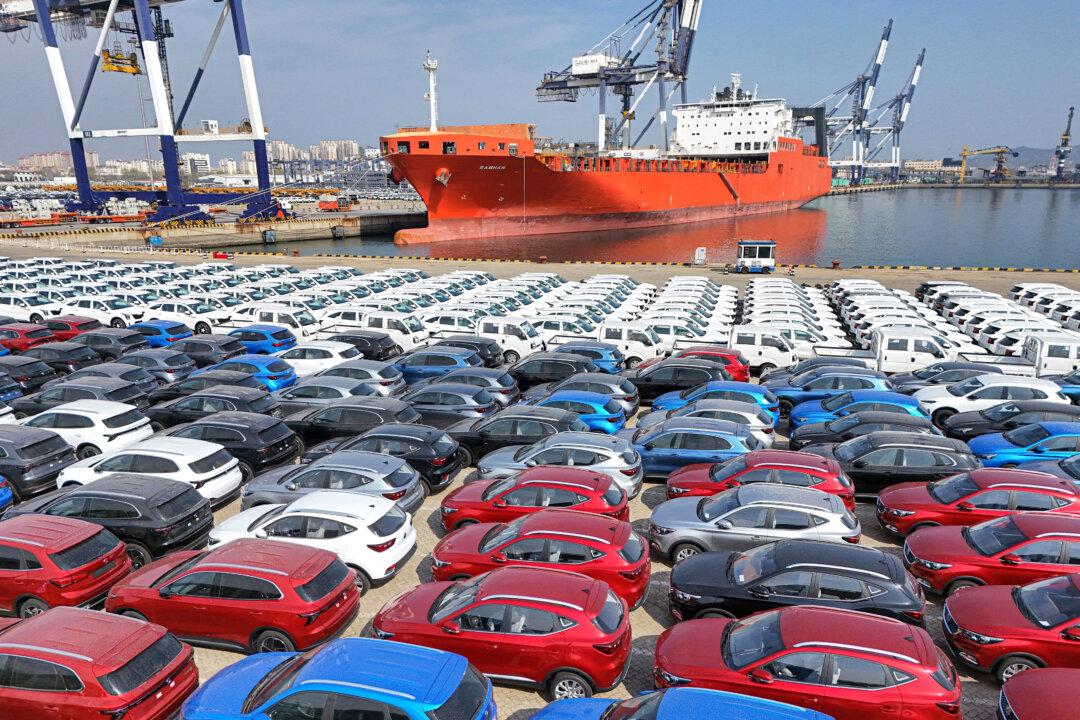The U.S. trade deficit widened in November 2024 due to the largest import increase since March 2022, as companies prepared for the incoming administration’s proposed tariffs and a potential port strike.
According to the Bureau of Economic Analysis, the trade gap jumped by 6.2 percent in November, to $78.2 billion, slightly higher than the consensus forecast of $78 billion.
October’s trade deficit was adjusted lower, to $73.6 billion from $73.8 billion.
Imports surged by 3.4 percent in November, to $351.6 billion, fueled by purchases of semiconductors, crude oil, passenger cars, civilian aircraft, and foods.
Meanwhile, exports climbed by 2.7 percent to an all-time high of $273.4 billion. Sales of petroleum products, passenger cars, plastic materials, and trucks and buses led the shipments for the month.
America’s trade deficits with China and Mexico were little changed. However, the deficit ballooned with the European Union (Germany and France, primarily) and Vietnam.
With November’s numbers, President-elect Donald Trump will inherit a trade deficit that is about 23 percent higher than it was when he left office in January 2021.
It is uncertain if he can reverse the trend because a stronger U.S. dollar and weaker foreign economies and currencies might constrain demand for U.S. goods.
The U.S. dollar index, a metric of the greenback against a weighted basket of currencies such as the Japanese yen and the euro, has surged by 6 percent over the past 12 months.
Port Workers Could Strike Again
Companies were preparing for a possible strike by thousands of dockworkers and Trump’s tariff proposals.The International Longshoremen’s Association (ILA), North America’s largest maritime workers’ union, may strike again as soon as next week.
In October, thousands of maritime workers protested at dozens of facilities in Atlantic Gulf Coast ports, from Maine to Texas.
The three-day job action was suspended when the ILA reached a tentative agreement with the U.S. Maritime Alliance (USMX). Negotiations between the parties resumed on Jan. 7 as both sides grapple with the issue of automation.
“Automation will continue to be an issue that will be worked out and is being worked out in this contract,” ILA president Harold Daggett said in a statement.
“The ILA negotiated restrictions on automation and semi-automation in the last contract. The ILA just wants to tighten the language that no automation means no automation.”

Preparing for Trump Tariffs
According to data compiled by Apollo chief economist Torsten Slok, companies, from health care to industrial, are talking more about tariffs.Trump suggested implementing uniform tariffs of 10–20 percent on all goods entering the United States and 60–100 percent duties on imports from China.
Shortly after winning the November 2024 presidential election, Trump threatened to impose tariffs on goods from Canada, Mexico, and China and introduce trade levies on countries participating in anti-dollar efforts.
While the incoming administration has not officially outlined a trade policy, companies are preparing in advance for potential tariffs and potential outcomes.
“Businesses anticipate prices rising further in 2025 as a result of tariffs,” Bill Adams, chief economist for Comerica Bank, said in a note emailed to The Epoch Times.
“That’s the whole point of tariffs—they are supposed to help American manufacturers charge higher prices by preventing foreign competitors from undercutting them with cheaper products.”
Similar developments were observed in the recent Institute for Supply Management Manufacturing report, which ended the year in contraction.
The monthly survey of manufacturing executives highlighted a spike in new orders last month as companies bolstered demand in anticipation of changes in trade policy.
Timothy Fiore, the head of the Institute for Supply Management’s business survey committee, confirmed that the demand uptick was driven by a blend of companies improving customers’ delivery demands and avoiding potential tariffs.
“Businesses likely pulled forward demand given uncertainty around future trade environment,” Jeffrey Roach, chief economist for LPL Financial, said in a note emailed to The Epoch Times.
Even consumers are taking preemptive measures ahead of tariffs.
A recent StorageUnits.com survey of 1,750 Americans, shared with The Epoch Times, found that 28 percent of consumers are actively stockpiling goods. Seventeen percent will begin soon.
This is because 90 percent of surveyed respondents are concerned that Trump’s tariffs will raise the cost of goods.
It was recently reported that the president-elect is considering altering his tariff plans when he returns to the White House. However, he disputed the accuracy of the reporting.
“The story in the Washington Post, quoting so-called anonymous sources, which don’t exist, incorrectly states that my tariff policy will be pared back. That is wrong,” he wrote on the Truth Social platform.







